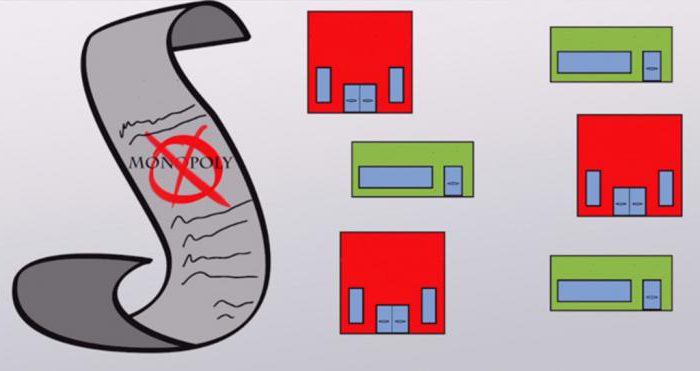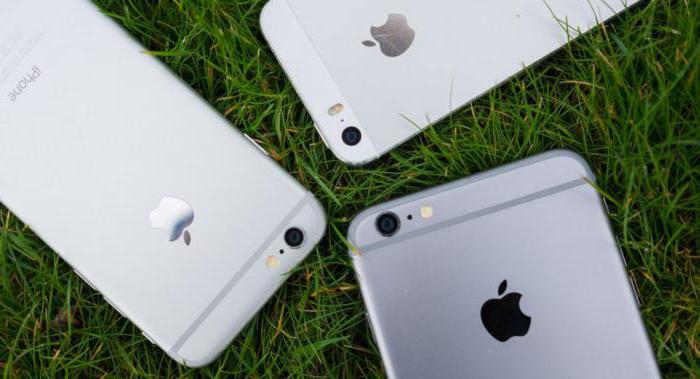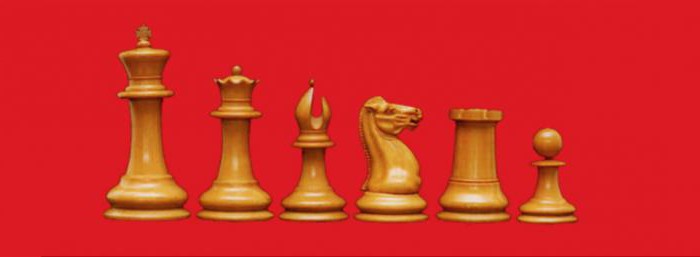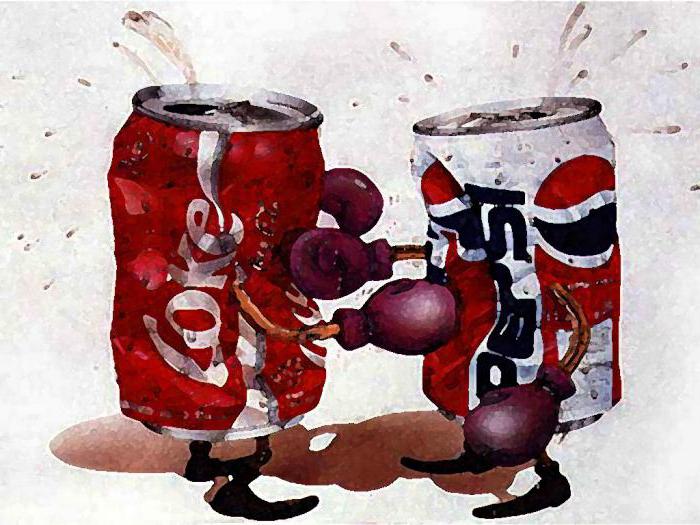A market economy differs from other types of economic models in that participants have the right to choose what they like more than other options. This means that the manufacturer decides for himself what he will do, and the buyer chooses where and what kind of product to buy. Workers will not remain forgotten - they have the opportunity to independently decide where to work. The key concept of a market economy is competition, because it is in such a struggle that one can succeed. That is, competition and monopolistic activity are the basic concepts that allow developing both at the level of a specific participant in the economic model and the system as a whole.

general information
From the dictionaries of economic terms, it follows that competition is a rivalry in which different market participants enter. The main goal pursued by substantive competition is the best conditions for the manufacture, sale, acquisition of a wide range of positions.
Competition is a category without which market relations in a developed society cannot even be imagined. The forms and methods are quite different from each other, but the single essence of competition remains. At the same time, competition is distinguished within industries when similar products conflict, as well as between industries.
Cataloging and money
From the point of view of economists, the most correct is the division into the following forms of competition:
- price;
- non-price.
Price suggests that prices for goods and services are set, focusing on the competitor and trying to offer the buyer more profitable, cheaper positions. The decrease is organized by lower costs, reduced profits. However, only firms with sufficiently large resources can go to the second.

The non-price form of competition is based on the idea of providing the buyer with the highest possible quality, highest reliability. This can be achieved by a manufacturer who creates the best technical conditions for production lines, applies modern technologies, and introduces effective innovations.
Perfection: achievable or not?
When talking about legal, illegal types of competition, about the methods, methods, technologies, strategies used by market participants, they classify competition as perfect, imperfect. The first involves absolute freedom. Depending on which species are observed, appropriate markets are identified.
Perfect competition suggests that individual firms have little influence on the final price of a product, but the market is competitive. Moreover, competition is free. This is an ideal image that allows you to simultaneously work with a large number of sellers, independent of each other. All participants interested in purchases have the same rights and opportunities to purchase the presented goods.
Considering the positive aspects of competition, for perfect it should be noted that here firms do not affect the price at which products are offered to retail customers. This is due to the fact that there are a lot of market participants, each individual organization offers a relatively small amount of product, that is, it owns a small percentage of the market.However, it is already obvious from the description that it is impossible to achieve such a state of the market within the framework of our civilization - this model is ideal, you can strive for it, get closer, but not achieve its realization in reality. If we analyze the market that existed in European countries tentatively until the 19th century, we can conditionally call it the ideal form of competition.
Progress and Economics
In the 19th century, technological breakthroughs, industrial revolutions occurred, there was a major restructuring of not only production processes, but also the market economy in many countries of the world. NTP has a strong effect on production concentration. This provoked the organization of large, super-large organizations. Simply put, progress has led to monopoly. Of course, in each individual country, measures are being taken to limit the monopolization of the market. In particular, 135-ФЗ "On Protection of Competition" is in force in our country. It works to some extent, but global market trends cannot be completely blocked.

Monopoly is a situation where there is a certain producer who has managed to gain a dominant position in the chosen field. He dominates the selected area, sets the “rules of the game”: pricing, production standards, quality, sales, and others. With a monopoly, the company seeks to control the volume of manufactured goods, the prices at which they are sold to customers. In order to achieve maximum profit, the monopolist sets such prices that more than cover the costs of manufacturing and give him profits significantly higher than normal. In our country, several regulatory legal acts have been adopted that regulate the antimonopoly policy of the state, including the already mentioned 135-ФЗ "On Protection of Competition", but this does not provide control over the situation to the desired extent.
Imperfect competition
This term refers to a market in which a form of competition reigns, more or less close to perfect, but not satisfying at least one of its requirements. There are three subspecies of this market situation:
- monopoly;
- oligopoly;
- monopolistic competition.
Monopolistic competition
Competition, which allows a sufficiently large number of buyers and sellers to work simultaneously, is designated in the economy. At the same time, the market is faced with product differentiation, that is, the emergence of a wide list of qualities and properties of products. This allows the buyer to choose, evaluating numerous parameters, as the competitors' positions differ from each other. The difference may be slight or quite serious. Typically, companies manipulate the following aspects:
- quality;
- packaging;
- favorable conditions for cooperation;
- location of the outlet;
- high level service.

That company, which collects the maximum benefits, can count on the largest volume of transactions. Monopolistic competition in the economy is a phenomenon when a manufacturer offering differentiated positions captures an impressive part of the market, through which it controls pricing. However, in practice, each individual seller has a rather low sales volume, therefore, many monopolists appear. Each organization controls the cost of goods in a limited sector of the market, which actually allows us to talk about maintaining competition.
Oligopolistic competition
This term refers to the concept of competition, which describes the presence on the market of several organizations that dominate the situation. Products can be homogeneous, differentiated, but the price for it is formed by the leadership method. This means that mainly companies put the price tags the same as the market leader.
The opposite of oligopoly is the concept of competition - oligopsony.This term describes a situation when there are several large buyers setting the “weather” in the economy.
Choice, Freedom and Economics
Our market assumes that everyone can begin to produce products, look for buyers, enter into transactions, and realize what has been done. At the same time, manufacturers are fighting among themselves, wanting to get the maximum buyers, they use various tools and opportunities for this. Each company is interested in a leadership position.
With the help of competition, it is possible to improve the quality of the economic system in the country, the world, it is possible to “improve” individual links in the current chain. Features of competition - civilization, focus on the fight, interest in the best result. To achieve it, the manufacturer is obliged to stimulate staff to provide new breakthroughs in technical, technological, production, through which to obtain better conditions, quality, and in the end - market position. The system dominates with respect to command and administrative when there is no competition as such.
What is good and why do we need it?
Key positive features that distinguish the main types of competition:
- reduction of expenses, prices;
- incentive of technical, technological improvement;
- incentive to improve product quality;
- Reason for finding new opportunities for production.

Through competition, you can regulate the range of positions on the market. This means that species competition stimulates to present on a larger scale those goods for which demand is high, and not to produce what is not in demand in society. Since the logic “the customer is always right” operates in this case, the manufacturer is by default interested in the delivered product being of impeccable quality. At the same time, through competition it is possible to develop and introduce fundamentally new approaches to company management.
A spoon of tar
Do not do without negative points. So, functional competition (and other types) suggests that there are losers to whom the market has turned out to be cruel. They tried to go "into the world", but failed. The more perfect the competition, the more those who suffer from a lack of jobs, the higher the percentage of bankruptcies, and the market situation is such that with the slightest weakness in the competitor, other, more successful companies suppress.
Product: competitive or not?
Below are the factors that influence whether a position will be in demand, in the examples. Competition is a difficult system of functioning of a market economy, with it success is determined by the parameters of the product and organization:
- production features;
- labor investments;
- taxes
- innovation;
- company profit;
- wage.
The following features will influence the position’s consumption:
- novelty;
- cost;
- quality level;
- after sale service;
- preparation before sale.
Varieties: features
There are six groups:
- Functional, that is, based on different methods of satisfying customer needs.
- Species. Examples of competition - a market filled with similar products, decorated differently and this attracting customers.
- The subject, when similar, but differing in quality performance positions compete with each other. At the same time, buyers pay attention to the manufacturer - some brands are more attractive than others.
- Price, when sales growth is achieved by lowering the cost, so that the market becomes larger.
- Hidden, expressed in lowering the price of consumption or in the personal implementation of a position at a cost set by a competitor.
- Illegal imitation implemented through anti-advertising.

Forms
Competition exists: objective, personal, functional. It is due to different approaches to the process of cooperation between the buyer and seller.So, if some customer need is known, the supplier can satisfy it with different methods. This creates functional competition, which is mandatory for accounting even when the organization supplies unique goods.
In the case of personality, they talk about products designed to achieve the same goals, while between the positions you can find some differences. Example: private cars designed for an equal number of people and approximately the same operating conditions, but with different engines.
Finally, the subject (intercompany) exists when different companies produce identical positions, different in quality (and sometimes the same in quality level).
Methods
The methods are as follows:
- quality improvement;
- service enhancement;
- cost reduction;
- reduction of costs associated with the use of goods;
- improved management quality;
- the use of various advantages that increase the competitiveness of goods.
Direct, hidden, price, non-price
Price competition makes it possible to conquer the market with a new position, and for already released goods - to strengthen the position, which is an indispensable tool if demand falls unpredictably. Such competition is direct, when price reduction is widely known, the information is not hidden, and hidden. In this case, the organization offers new positions, talking about the best options, while the price increases, but very slightly, in comparison with the improvement of features.

In non-price competition, manufacturers focus on various properties, product qualities, among them - reliability, design solution, and other aspects. To win using this method of competition, you need to skillfully use the capabilities of advertising campaigns. Attracting attention to the product through non-price competition occurs with the help of additional services, services offered to the buyer. For this, special training programs are even being developed. Some companies offer to give them old goods, due to which they reduce the price of a new one, while others organize delivery on a turnkey basis or an improved version of the “in hand”.
Contrary to laws
Where there is goods, money, market and competition, there are laws and those who do not want to abide by them. It is not surprising that, if used correctly, illegal methods of competition can bring not only good results for themselves, but also “sinking” of competitors. At the same time, some firms resort to industrial espionage, while others try to lure valuable personnel from competitors, preferring those workers who know the secrets of production.
There are organizations trying to imitate, copy positions offered by other, more well-known manufacturers. The quality of the original is not always copied at the same time, which does not stop attracting the attention of many customers, since outwardly the goods are identical. Since in most cases copies are much worse than the original, it ruins the competitor’s reputation.
Competition intensity
The intensity is determined by what competition is, how actively it is expressed, how much it affects the economic situation in the country and the world. Competitors are opposing each other within the industry, market. The situation is controlled by the authorities of the country. The state can control imports, exports, introduce bans. This makes the industry more attractive or, conversely, blocks interest. Some time ago, an economist Michael Porter developed a model named after him. It is it that is used to adjust the intensity of competition in the market. The model suggests taking into account five forces that influence the market situation:
- the emergence of new firms in the market space;
- influence of suppliers;
- customer influence;
- competition between famous participants;
- the likelihood of replacement products.

What is this about?
The first involves a risky situation when new actors enter the market. This means that production capacity is increasing, but each competitor is robbed of a small market share.
Suppliers can influence the quality, price of goods, as their services are directly related to profitability. They have the greatest power under the following conditions:
- several dominant companies;
- no substitutes;
- there are more suppliers than manufacturers;
- the manufacturer does not have a special price from the supplier;
- the product is important to the manufacturer;
- suppliers are highly differentiated;
- if the manufacturer changes the supplier, he is faced with numerous additional costs.
What depends on the buyer?
In the model of Michael Porter, the buyer has a certain power that affects the intensity of competition, since it is through the buyer that the cost of positions in the industry decreases. Regulation is carried out by the volume of consumed, purchased goods. In addition, the buyer can demand better quality, setting the insurmountable condition of maintaining the same price. The greatest power buyers in the market provide factors:
- impressive volumes of acquisitions;
- increased concentration of customers;
- goods, services are standard, not differentiated;
- the manufacturer does not hide data on production costs;
- the demand is elastic.
Competition: what are manufacturers afraid of?
The intensity of competition is influenced by the availability of substitutes in the market. If there was already a certain product manufactured by the company, but a substitute appears, this may establish a new frontier of value. If the prices of goods rise above a certain border, buyers massively pay attention to substitutes that have a lower cost.

The core of the Porter model is competition within the industry between firms. The higher the intensity, the more organizations within the industry, especially if they are differentiated, and the industry is underdeveloped. Affect emotional, strategic features, fixed spending. The speed of the internal processes of the industry, the specifics of the interaction between competing firms also affect the intensity.
Find the balance
To balance the situation within the industry, an equilibrium price can be introduced. This concept implies a value that takes into account production features, the interests of suppliers, customers. When choosing in favor of this price, the volume of services, goods consumed by customers, is the same as the volume of services, goods manufactured by companies.
The equilibrium price gives access to a stable situation without excess, deficit, supply and demand are equal, but the cost does not decrease, does not grow.

Competition is what drives the market in our world. Changes in demand, supply - this is what makes it possible to achieve relative or complete equilibrium, even in conditions of changing prices. This is due to the interconnection of everything that happens in the economy, that is, the price adjusted for one product pulls a whole chain of changes in the value of other items. And this relationship of everything that happens in the economy makes it possible to grow, taking into account the interests of all market participants.